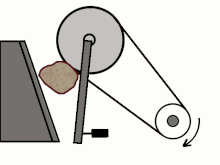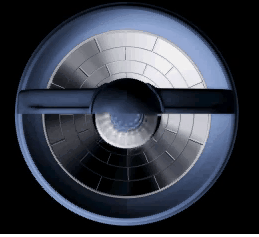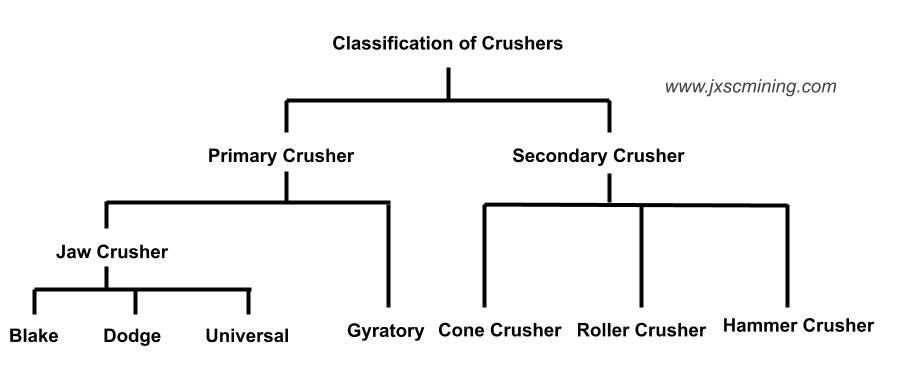Type of Crushers and Their Difference
Posted on: Dec 10, 2019, · 6 min read.
What is a crusher?
A crusher is a machine that is designed to reduce large rocks into smaller rocks, gravel, or rock dust. Crushers may be used to reduce the size of materials, or change the form of waste materials so they can be more easily disposed of or recycled, or to reduce the size of a solid mix of raw materials so that pieces of different composition can be easy for next step separation.
Understanding the different so you can achieve the maximum efficiency
As an old Chinese saying goes “One must have good tools in order to do a good job.” selecting an appropriate crusher, or indeed any parts of processing equipment, is very important in every quarry operation. And understanding what each crusher type is used for and knowing some general efficiency tips and the proper way to feed these machines will lead to the best results in your mining processing. Of course, each type of crusher is different and each of them is used to achieve a particular result. Likewise, to obtain a specific output, each type of crusher requires different maintenance tasks to keep it running efficiently. Operators who can achieve this, along with a consistent feed to the crusher, will be the most efficient and, more importantly, the most profitable.
Types of crushers
The following table describes typical uses of commonly used crushers:
| Type | Hardness | Abrasion limit | Moisture content | Reduction ratio | Main use |
| Jaw crushers | Soft to very hard | No limit | Dry to slightly wet, not sticky | 3/1 to 5/1 | Heavy mining, quarried materials, sand & gravel, recycling |
| Gyratory crushers | Soft to very hard | Abrasive | Dry to slightly wet, not sticky | 4/1 to 7/1 | Heavy mining, quarried materials |
| Cone crushers | Medium hard to very hard | Abrasive | Dry or wet, not sticky | 3/1 to 5/1 | Quarried materials, sand & gravel |
Jaw Crusher
Jaw crusher is used as primary crusher, it’s reduction ratio is usually 6:1. It uses compressive force to break the material, this mechanical pressure is achieved by the two jaws of the crusher. It is called a jaw crusher because it works the same was a human jaw does-food goes into your mouth and your bottom jaw pushes the food up against your fixed-top jaw. Inside the jaw crusher, is consisting of two vertical jaws installed to a V form, one jaw is kept stationary and is called a fixed jaw while the other jaw, called a swing jaw, moves back and forth relative to it, by a cam or pitman mechanism. where the top of the jaws are further away from each other than the bottom, so it can use a constantly moving metal piece that crushes the stones on a situated metal piece in small movements. Jaw crushers are classified on the basis of the position of the pivoting of the swing jaw
- Blake crusher-the swing jaw is fixed at the upper position
- Dodge crusher-the swing jaw is fixed at the lower position
- Universal crusher-the swing jaw is fixed at an intermediate position
The type of jaw varies, which makes the different jaw crushers preferred for certain projects. For example, the Dodge crusher is used for laboratory purposes and not as heavy duty machinery because it can get clogged too easily, making it useless for large-scale projects.
[caption id="attachment_5706" align="aligncenter" ] Operation of a dodge type jaw crusher[/caption]
Operation of a dodge type jaw crusher[/caption]
In the Dodge type jaw crushers, the jaws are farther apart at the top than at the bottom, forming a tapered chute so that the material is crushed progressively smaller and smaller as it travels downward until it is small enough to escape from the bottom opening. The Dodge jaw crusher has a variable feed area and a fixed discharge area which leads to choking of the crusher and hence is used only for laboratory purposes and not for heavy-duty operations.
The jaw crusher is usually made of cast steel because it is such a heavy-duty machine. Its outer frame is generally made of cast iron or steel. While the jaws themselves are usually constructed from cast steel. They are fitted with replaceable liners which are made of manganese steel, or Ni-hard (a Ni-Cr alloyed cast iron). Usually, both jaws are covered with replaceable liners. Also in some types, the liners can be turned upside down after a while, extending the replacement time.
Gyratory Crusher
[caption id="attachment_5710" align="aligncenter" ] gyratory crusher working principle animation. image credit by 911 Metallurgist[/caption]
gyratory crusher working principle animation. image credit by 911 Metallurgist[/caption]
Similar to a jaw crusher, the gyratory crusher pulverizers the stones by placing them between two manganese steel plates and going straight down. It does not rotate, rather it is powered by electricity. Gyratory crushers are used in mine or ore processing plants and they can be used for primary or secondary crushing. It crushes rocks by rotating the vertical shaft and crushing the rocks in a circular motion where they fall out the narrow bottom when they are small enough.A gyratory crusher is used both for primary or secondary crushing.
Cone Crusher
Cone crusher is similar in operation to a gyratory crusher, but with less steepness in the crushing chamber and more of a parallel zone between crushing zones. A cone crusher breaks material by squeezing the material between an eccentrically gyrating spindle, which is covered by a wear resistant mantle, and the enclosing concave hopper, covered by a manganese concave or a bowl liner. As the material enters the top of the cone crusher, it becomes wedged and squeezed between the mantle and the bowl liner or concave. Large pieces of the material are broken once, and then fall to a lower position (because they are now smaller) where they are broken again. This process continues until the pieces are small enough to fall through the narrow opening at the bottom of the crusher.
A cone crusher is suitable for crushing a variety of mid-hard and above mid-hard materials. The feed is dropped to the crusher from the top and it is crushed between the crushing chamber and the slowly rotating cone.
Cone crushers are mostly used for the large scale crushing in the mining industry. It has the advantage of reliable construction, high productivity, easy adjustment and lower operational costs. The spring release system of a cone crusher acts as an overload protection that allows tramp to pass through the crushing chamber without damage to the crusher.
The cone crusher can be divided into four subtypes: compound crusher, symons cone crusher, single cylinder hydraulic cone crusher, and the multi-cylinder hydraulic cone crusher.
Impact Crusher
[caption id="attachment_5695" align="alignright" ]
 impact crusher made by jxsc mining[/caption]
impact crusher made by jxsc mining[/caption]
Impact crushers involve the use of impact rather than pressure to crush material. The material is contained within a cage, with openings on the bottom, end, or side of the desired size to allow pulverized material to escape. There are two types of impact crushers: horizontal shaft impactor and vertical shaft impactor. Impact crushers are suitable for materials that are soft or easily cleaving from the surface. The crusher consists of a fast spinning rotor and beaters attached to the rotor. The feed is entering to the crusher from the top and crushing starts immediately when the feed is impacted with beaters towards the crusher’s inner surface. Impact crusher can also be equipped with a bottom screen, which prevents material leaving the crusher until it is fine enough to pass through the screen. This type of crusher is usually used for soft and non abrasive materials.
Roller Crusher
Roll crushers crush the material use two opposite rotation of the rollers. The crushing is made up of electromotor, holder, fixed roller, movable roller and safety spring. The surface of the roller is mostly smooth. According to the number of rolls, there are single-roll, double-roll or multi-roll crushers. The double roll crusher is the most common rock stone crushing machine. Its crushing ratio is usually lower than in other crushers, so it’s suitable for fine crushing. The roll crusher uses compression to crush materials, and the reduction ratio is 2 to 2.5 so roller crushers are not recommended for abrasive materials.
Hammer Crusher
Hammer crusher consists of a high-speed, usually horizontally shaft rotor turning inside a cylindrical casing. The crusher contains a certain amount of hammers that are pinned to the rotor disk and the hammers are swinging to the edges because of centrifugal force. The feed is dropped to the crusher from the top of the casing and it is crushed between the casing and the hammers. After crushing the material falls through from the opening at the bottom.
In conclusion
when selecting the correct crusher to best suit a particular operation, it is important to understand the requirements for each stage of crushing and how to properly feed each crusher. During the primary crushing stage, the aim is to get the material to a size that conveyors and other aggregate processing machines can handle. Generally, jaw crushers are installed at this crushing stage. Some operations will need further crushing in secondary and tertiary crushing stages. These stages are used to better control and size the output. Impact crushers and cone crushers tend to be used during these stages to better control particle size and shape. Understanding how to best match the type of crusher to the right crushing stage, as well as working with a manufacturer to properly size the crusher, will ensure crushing and feeding efficiency throughout an operation and, ultimately, overall profitability.
Read More Blogs
